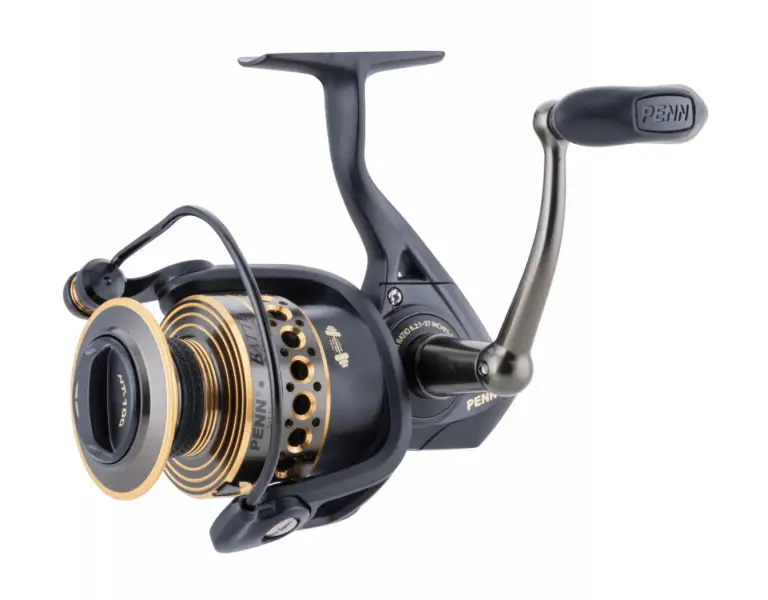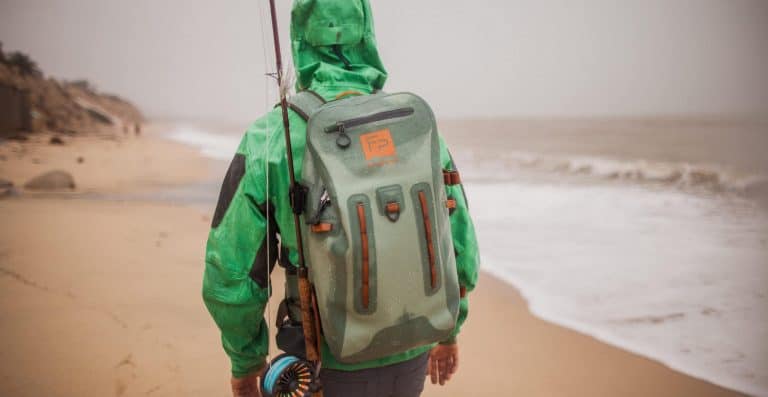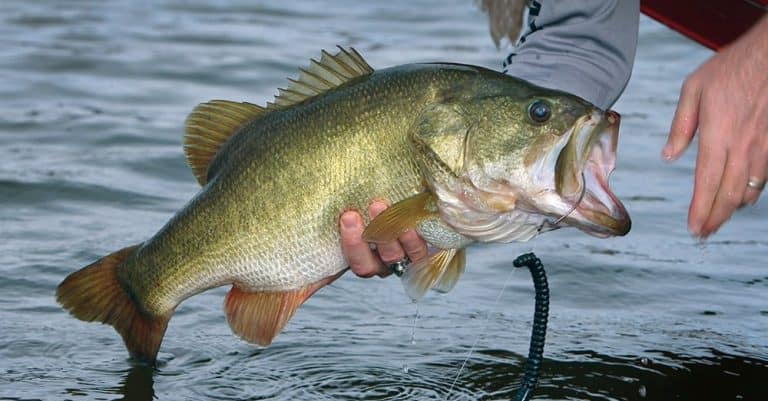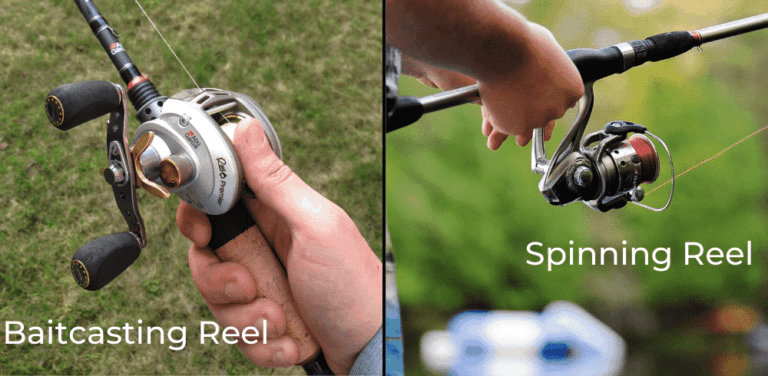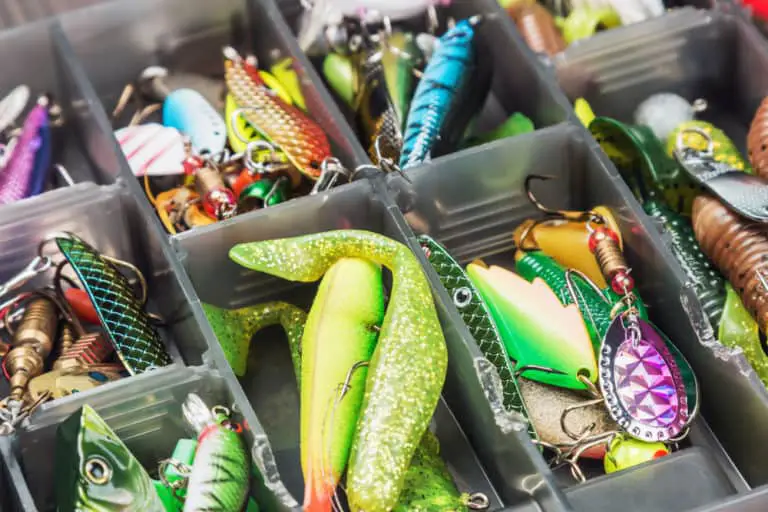Different Types Of Fishing Reels – 4 Common Reel Types
If you’re new to angling, it’s easy to get confused when you look at an array of different fishing reels. Which one is right for you? Which reel is best suited to the size and species of fish you want to catch? How easy is it to use?
It’s highly probable that Chinese fishermen were the first to invent the fishing reel around 300 or 400 AD. Overtime fishing reels have advanced to become what they are today. Nowadays anglers have the choice between many different types of fishing reels, all of which can serve a different purpose.
Throughout this post, we are going to explain the different types of fishing reels, how to use them, and what the best use of the reel is.
Fishing Reel Comparison
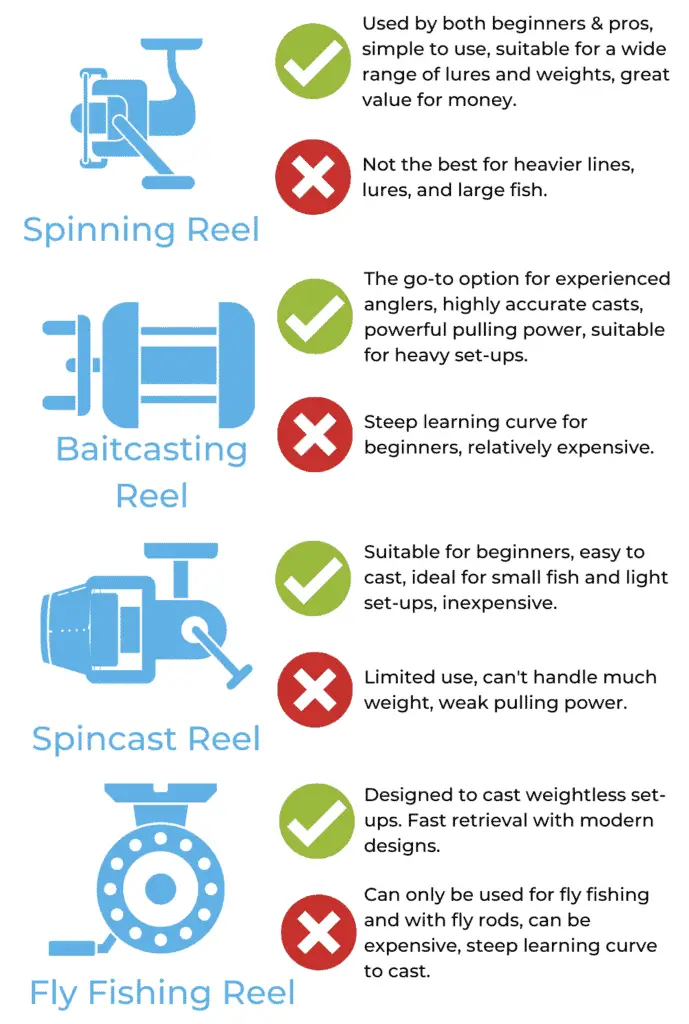
Types of Fishing Reels
Spinning Reels
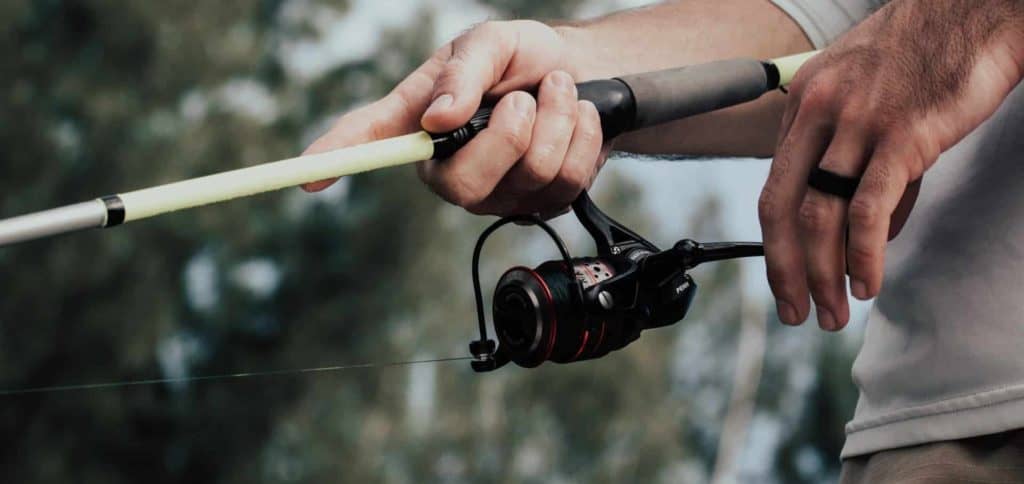
Spinning reels are the most popular form of fishing reels, they are the “go-to” option for most anglers. Their use ranges from beginners using them to catch small prey fish to experienced deep-sea anglers reeling in monster tuna. Spinning reels are more complicated to use than a spin caster, but arguably much easier than a bait caster. They come in a wide range of spinning reel sizes.
They feature an open-face design with the spool and line exposed, with the drag adjustment on the top of the spool. They also have a metal bail arm, which is used to lock the line to prevent it from unspooling. The bail arm also helps line spool evenly back onto the reel.
The position of a spinning reel is unique compared to the other reels. It is positioned on the underside of the rod, facing the ground. This actually provides a more natural reeling position, and allows for a good balance whilst casting.
Casting:
Casting a spinning reel is fairly straightforward once you have had a few practice tries and understand the basics.
To begin, you must disengage the bail arm to allow the line to freely spool, squeeze the line against your rod with your index finger to hold it in place. Then, swing your rod either overhead or to the side, as you do this, release the line from your index finger around half-way through the motion – it should unspool and start casting towards your desired target. Make sure to aim the rod tip where you want your bait to land.
After your bait has landed and is beginning to sink always remember to reengage the bail arm. Some bails will automatically close when you start reeling, but to ensure that the line is correctly re-spooled and to avoid any tangles, it’s best practice to always reengage the bail manually after casting.
Pros & Cons
One of the biggest pros of a spinning reel is its versatility, they can be used for numerous styles of fishing, using lures, live baits, and light-heavy set-ups. They can be used to target almost any species given that the spinning reel size is correct. When combined with some high quality braided line, they can be used for powerful fish, such as Northern Pike.
They can cast long distances once you get used to them, and you can get a high-quality spinning reel at a very reasonable price between $50-$150.
One drawback of a spinning reel is that you are limited to lighter tackle and gear unless you have a massive spinning reel (not common for most freshwater anglers). Another is that if you don’t properly cast or engage the bail it is easy to quickly get a bird’s nest of line in your reel.
Baitcasting Reels
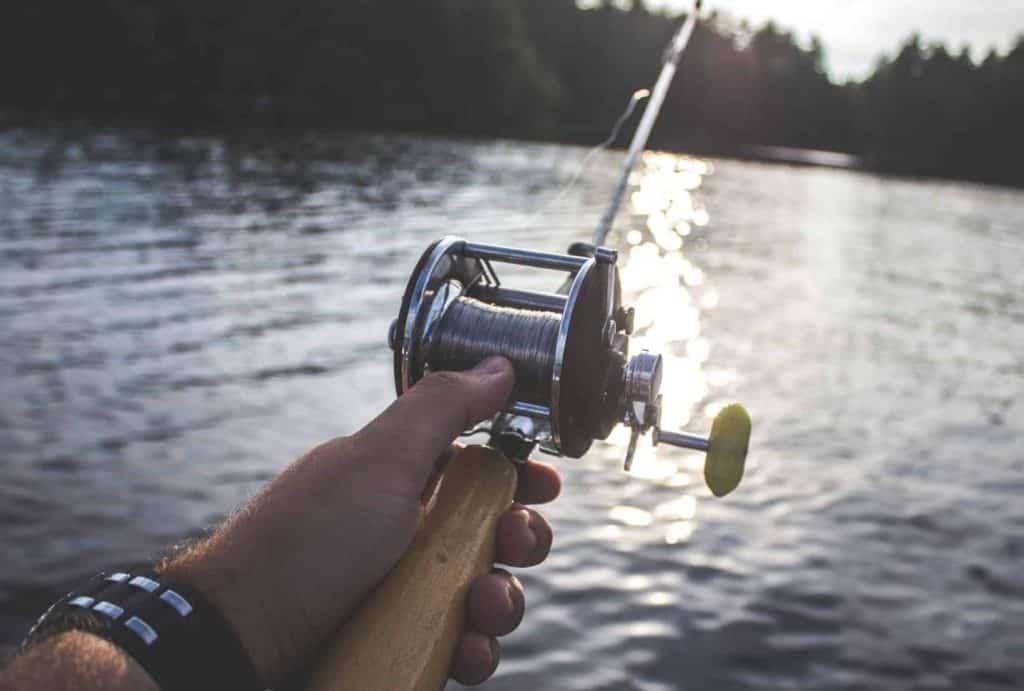
Baitcasting or baitcaster fishing reels are arguably the most advanced type of fishing reels. It is predominantly used by experienced anglers and competitive fishing pros due to its ability to handle heavier tackle, and fish – all whilst having better accuracy and precision than other fishing reel types.
Baitcasters have a steeper learning curve than other reels due to many more moving parts. Baitcasters are harder to use, but once mastered, they perform much better than spinning reels which would be the next-best option for most anglers.
Baitcasters sit on top of the rod (pointing to the sky), they feature a semi-closed design which is a very sturdy and durable design. The drag mechanism usually sits next to the handle. It also features a spool tension knob and a braking system which both essentially help to control the speed at which the line leaves the reel.
All these features help you cast your line, not only further, but with much more accuracy. You can put your bait or lure exactly where you want it – hopefully where the fish are hiding.
Casting:
Unlike spinning reels, baitcasters don’t have a bail arm that stops the line from spooling. To stop the line from spooling you press your thumb against the spool to slow the line. Once you have landed your bait in the right spot you press a button or clip on the reel to lock the line.
Pros & Cons
There are many pros to using a baitcaster as your preferred type of fishing reel – it’s a professional angler’s first choice for a reason. Firstly, because they are highly accurate, whilst you might land your spinning reel bait at the right spot more than not, a baitcaster can achieve it every-time.
Secondly, baitcasters can handle heavier tackle and lures. If you plan on casting heavyweights, large bait, or dealing with heavier and thicker fishing lines, then a baitcaster is the best option.
They also are regarded as the most powerful type of fishing reels, if you need a lot of pulling power whilst going after trophy fish, then a smaller spinning reel won’t cut it.
One aspect of using baitcasters that is regarded as a con is that using different weighted lures and baits requires you to adjust the reel tension and braking system settings if you want to maintain the same distance casts. This can be finicky and time-consuming for a beginner.
Baitcasters are also the most expensive of the different fishing reel types, for a good reel you are looking upwards of $100, with some commonly costing around $500 for a premium model. We believe that the increase in performance and quality is always worth the extra cost, especially when you consider that it’s a reel that could last your entire angling life if looked after properly.
Spincast Reels
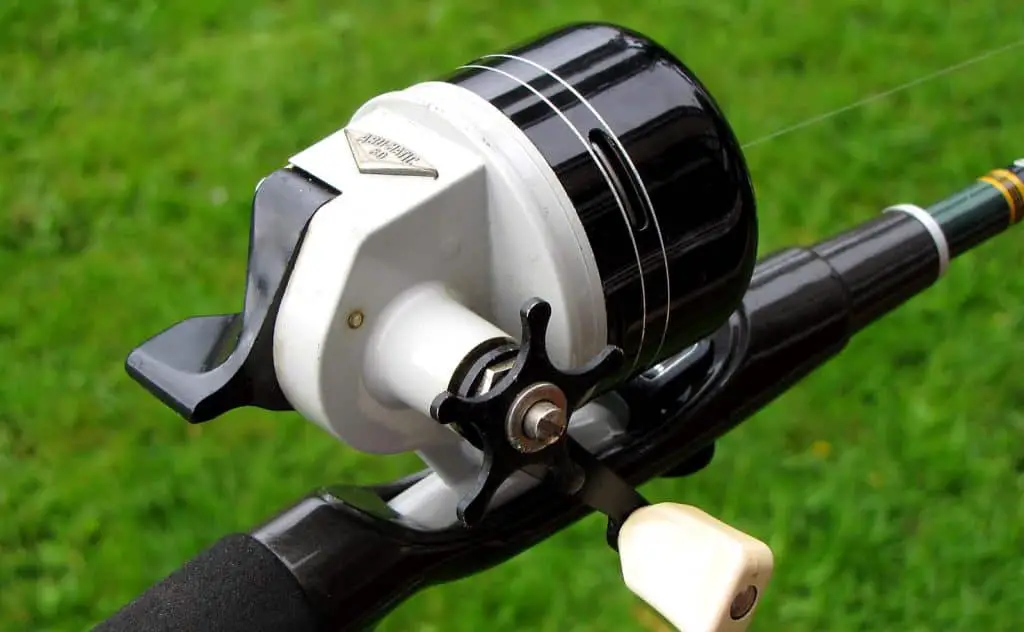
The spin cast is the simplest and easiest to use modern fishing reel. They are mainly used by beginners, anglers looking for ultralight set-ups, or anglers on a budget. You don’t see as many spin-cast reels nowadays as you might of 10-20 years ago.
The first thing you notice about a spin cast reel is that they have a closed-face. All of the main components, like spool and line, are enclosed within the metal or plastic nose cone.
Casting:
Spincast reels are the simplest of all reels to operate. There is a button on the side of the reel which is used to toggle the line between locked and free-spooled. To cast, you hold the button and cast your rod with your wrists. At the end of your cast release your button as you would whilst throwing a ball, let the line sink a little, and reel it in slightly to place more tension on the line.
Pros & Cons
The biggest pro of a spin casting reel is the ease of use. The simple one-button operation makes it easy to cast and retrieve without the worry of any line tangles. This is why it is mainly suited towards young children and beginner anglers.
Another benefit is the cost, compared to quality spinning and baitcasting reels, a spin caster should only set you back around $20.
Whilst they are cheap and easy to use, they do have some downsides. Firstly, if any saltwater or debris gets inside the closed-face it is difficult to remove and clean, which causes damage over time.
Secondly, spin casters just aren’t that well-made. Probably due to low demand, few advancements have been made to further the performance and durability of spin-cast reels. It’s unlikely it will last you more than one season, whereas a decent spinning reel will last you many years.
Thirdly, they can’t cast as far or handle as much line and weight as other reels. As a beginner, you might not need a lot of heavy tackle and plenty of line to learn how to fish. But as you progress, or start to target larger species, a spin-cast reel just won’t cut it.
Fly Fishing Reels
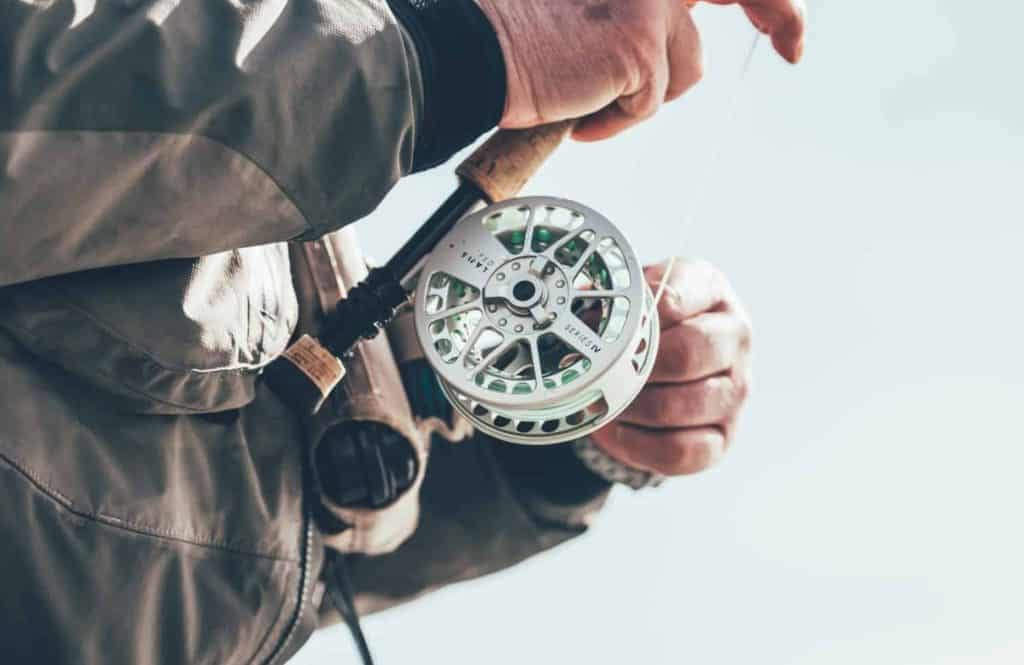
Fly fishing reels are designed to cast ‘weightless’ lines and lures, they are used by fishermen who fly fish in streams and rivers for species such as trout and salmon. Unless you are fly fishing, there will be no use in purchasing a fly fishing reel.
There are several types of fly reel on the market, and all serve a slightly different purpose. The 3 main designs of fly reel are the standard arbor fly reel, mid arbor fly reel and the large arbor fly reel. The arbor is the distance from the centre spindle to where the base of the spool starts.
Standard arbor (SA) fly reel: Predominantly used in small rivers and streams, this is the traditional form of fly reel. SA reels are the narrowest of all fly reels and can hold the least amount of fishing line.
Mid arbor (MA) fly reel: The middle ground between the SA and LA reels. The mid arbor has slightly more width than the SA, and can therefore hold more line. The line is also kept wound around a larger loop which reduces the line memory and gives a quicker retrieval rate.
Lare arbor (LA) fly reel: LA fly reels are the most modern type of fly fishing reels. Most fly anglers will be using a large arbor fly reel. They are much bigger than the other types, with more backing capacity and a much faster retrieval rate. Some traditional fly anglers will say that LA reels look too big for most fly rods, but they are very light in weight and balance any fly rod perfectly.
Casting:
In conventional fishing, you cast your lure and the line follows after it. During fly fishing, you cast your line and the lure (fly) follows behind the line – this is what allows you to fish with weightless lines and flies.
Casting a fly requires more focus on your rod and arm movements, and not so much on what you are doing with the reel. In fact, you only use the reel to retrieve your line if you have caught a fish. If you haven’t caught a fish, you use your hands to control the line.
To cast, you use your non-dominant hand to control or feed the line – hold it tightly during your casting stroke so the rod can ‘load’ and loosening your hold to allow the line to ‘shoot’.
Pros & Cons
Large arbor reels are the main type of fly reel used today, mainly because they are bigger, hold more line, have a faster retrieval rate and due to a bigger loop, they reduce the effect of line memory. Another benefit of a fly reel is that it is designed to be used with weightless set-ups, which is why fly fishing literally just uses a small fly and hook.
A con to using fly reels is that you are only restricted to fly fishing, as soon as you start added weight to the line, they just don’t perform like the other types of fishing reels. They are also fairly expensive, and a decent fly fishing reel is going to set you back over $100.
Selecting The Right Type of Fishing Reel
Experience Level
Your experience level as an angler will be the first and most important factor to consider when buying a new spinning reel.
Most new anglers will start out by using a spinning reel. A few decades ago, more beginners would use a spincast reel, but they aren’t as popular nowadays and are mainly used by younger children.
Spinning reels are used by all experience levels. Whether you are a seasoned pro, or completely new to the sport, a spinning reel can get the job done.
The more experienced you are, the more you can start looking at different types of fishing reels. If you have been using a spinner for a while, and need more power, accuracy, and maybe line capacity, you could start using a baitcasting reel.
Line Weight
Depending on which seasons throughout the year you are fishing, or what species of fish you are targeting, you might need to use heavier lines.
Seasons with unpredictable weather and high wind speeds might require the uses of a heavy line for more control whilst casting. Alternatively, if you are targeting predatory fish with sharp teeth like northern
You should be trying to match the line weight with the reel type and size. Double-check the manufacturer’s specs when buying a reel, they should list the line strength, and yardage that the spool can hold.
It will look something like this:
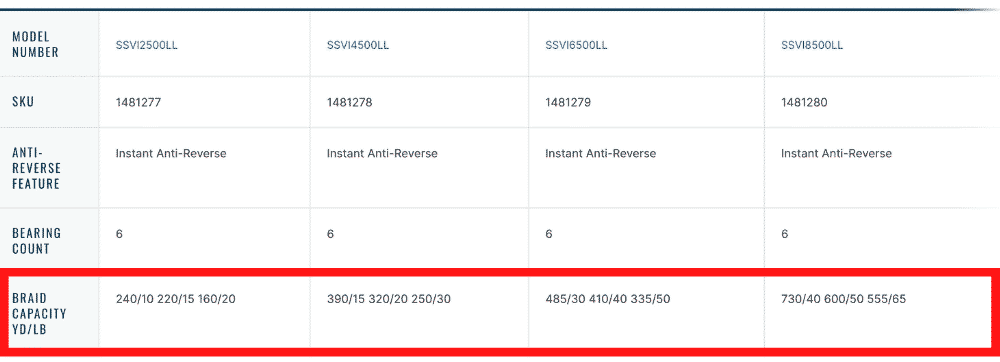
Rod Type
There is a few different types of fishing rod, and depending on which one you own, or are buying, will also determine the type of fishing reel you attach to the rod. The reel seat and guides are different on each rod, to accommodate the different sizes and attaching methods of each reel.
The 3 main rod types are spinning rods, baitcasting rod, and a fly fishing rod. All 3 rods are available in pretty much any length, and rod power and action you could want. So the rod type largely comes down to the reel type you like to use.
Spinning rods, as expected, are used with an open-faced spinning reel, or spin-cast reel. Whereas, baitcasting rods use baitcasting reels. There is some debate as to whether you can attach a spinning reel to a baitcasting rod and vice versa.
If your reel seats allow it, then it is possible. However, the line guides are usually smaller on a baitcasting rod, as the line flows off the reel in a straight line down the length of the rod. Whereas, the guides on a spinning rod are larger in diameter as the line flows off a spinning reel in a circular motion before passing through the guides.
Fly fishing reels are only used with a fly fishing rod.
Final Words
Whilst shopping around for a new fishing reel, you can quickly become spoiled for choice. Or as a beginner, it’s easy to get confused with all the reel jargon, sizes, type, shape, etc.
For most anglers, a spinning reel paired with a spinning rod is the best overall option in terms of versatility and the different styles of fishig you can accomplish. But, if you are more experienced and want to try your hand with baitcaster, for the improved accuracy and performance, there is no reason why you can’t.
All anglers will agree that baitcasters are harder to use, but just like anything, with some practice, you will soon master it.
Hopefully, this guide has helped you understand the different types of fishing reels that are available, and helped you make a decision on the next reel you’ll be angling with.

